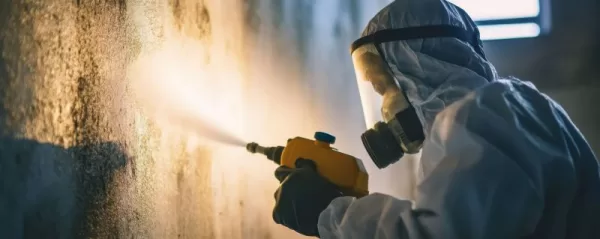Pest control plays an important role in every construction project. From the moment work begins, pests like rodents, insects, and birds can become serious problems. They can damage building materials, delay work, and even cause health risks for workers. To avoid these issues, having a well-planned pest control strategy is crucial.
In this guide, we’ll walk through the steps to effectively manage pests at construction sites and keep your project moving forward smoothly.
Why Is Pest Control Important During Construction?
Construction sites often become attractive to pests. As natural habitats are disturbed, animals like rats and insects start searching for new shelter and food sources. Moreover, materials such as wood and insulation provide ideal nesting areas. Without proper control measures, these pests can cause significant damage and delay your project. Therefore, starting pest control efforts early is essential to avoid unnecessary costs and setbacks.
Start Early: The Power of Prevention
One of the best ways to deal with pest problems is to prevent them from happening in the first place. Before construction begins, it’s wise to inspect the site for any signs of pests, such as droppings, nests, or burrows. Also, take note of areas that might attract pests, like stagnant water or overgrown bushes. By addressing these potential issues beforehand, you can significantly reduce the chances of pests causing trouble later and make sure your construction site’s pest control plan is strong from the start.
Additionally, getting advice from a pest control expert at this stage can be highly beneficial. An expert can recommend site-specific strategies, such as traps, barriers, or repellents, to keep pests away before they have a chance to invade.
Keeping the Site Clean and Secure
Once construction is underway, keeping the site clean and well-organized is key to preventing pests. Pests are often drawn to clutter, food scraps, and trash. Ensuring there are proper waste management systems in place can make a big difference. For example, using trash bins with lids and having them emptied regularly will reduce the risk of attracting rodents and insects.
Storage of materials is equally important. Building materials such as wood should be kept off the ground and covered to prevent pests from using them for shelter. Sealing entry points like windows, doors, and vents as soon as possible will also block common access routes for pests. By keeping the site clean and secure, you create an environment that is less appealing to pests.
Choosing Safe and Effective Pest Control Solutions
When choosing pest control methods, it’s essential to pick options that are both safe for workers and effective in getting rid of pests. While many pest control solutions involve chemicals, it’s important to use them carefully to avoid health risks. One of the best approaches is to use Integrated Pest Management (IPM), which combines different strategies to control pests with minimal reliance on harmful chemicals.
For example, IPM often involves the use of traps, barriers, and natural predators to reduce pest populations. If chemicals are necessary, it’s crucial to select those that meet local safety regulations and pose little risk to workers or the environment.
Ongoing Monitoring and Adjustments
Even with a strong pest control plan, regular monitoring is necessary. Pests can adapt to control efforts, or new problems may arise as construction continues. This is why it’s important to schedule regular inspections throughout the project. If any signs of pests are detected, immediate action should be taken to prevent the situation from worsening.
For instance, you may need to strengthen physical barriers or use additional treatments if pests start appearing despite your initial efforts. By staying proactive and flexible with your plan, you can avoid major infestations that could otherwise lead to delays or damage.
Collaborating With Pest Control Professionals
While there are many actions that construction teams can take to manage pests, working with a professional pest control company is often the best way to ensure long-term success. Pest control professionals bring specialized knowledge and tools that may not be available to the construction team.
A professional service can offer pre-construction treatments aimed at preventing termites or rodent infestations. These pre-emptive measures can protect the site from costly damage and ensure that the building materials stay in good condition throughout the project.
Maintenance After Construction: Don’t Let Pests Return
Pest control efforts should continue even after the building is complete. Regular maintenance is key to ensuring pests don’t find their way back. Periodic inspections will help identify any new entry points or potential issues before they turn into bigger problems. Sealing cracks and gaps that may appear over time is essential for keeping pests out.
Additionally, landscaping and waste management around the building should be well-maintained to avoid attracting pests. Keeping plants and bushes trimmed and ensuring that garbage is properly disposed of are simple yet effective ways to prevent future infestations.
Conclusion
Planning for pest control during construction is vital for a successful project. Pests can cause delays, damage materials, and create health hazards, but a good plan can prevent these issues. Starting with early inspections, maintaining a clean site, and choosing safe pest control methods are all part of keeping the project on track. Working with pest control professionals and regularly monitoring the site will ensure long-term success. Even after construction is finished, ongoing maintenance will help keep pests at bay and protect the building from future infestations. By following these steps, you can ensure a smooth construction process and avoid the costly problems pests can cause.

